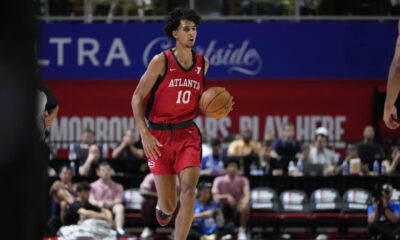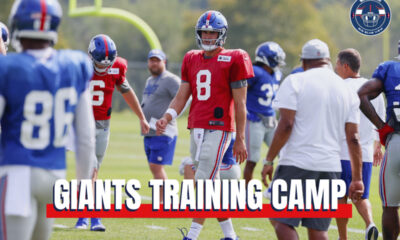
There is a real possibility that MLB expands relatively soon, and it will be a logical time to ease the burden of travel.
Major League baseball appears headed for new territory in the 21st Century. MLB Commissioner Rob Manfred has long stated he would like to expand the league, but only once the Oakland A’s and Tampa Bay Rays figure out their stadium situations. Those franchises have now settled on their paths forward, paving the way for expansion. Regardless of how you feel about the A’s leaving town and the Rays not, new stadiums in Las Vegas and St. Petersburg are a long time coming.
That means fans can get excited for two new teams to join MLB in the next decade. There will be plenty of interest around the continent to get in on a successful business venture at the highest level of sports, but a few cities are already the frontrunners. Nashville, Portland, and Salt Lake City have official partnerships ready to bid whenever the league declares they are open for business, and Montreal is a natural candidate as well.
Since the Houston Astros moved to the AL and interleague games happen every day, MLB has two symmetrical leagues with three divisions of five. We shouldn’t put it past Manfred to go with the boring and clunky method of just tacking a sixth team onto an existing division, but let’s have some fun with the potential of realignment. The league hasn’t expanded since the Rays and Arizona Diamondbacks joined in 1998, while the rest of the Big Four has grown this century. Since 2002, the NFL has had two perfectly symmetrical conferences with four divisions of four. In September, I looked at what the new AL and NL could look like, but today I take the geographic approach.
A Drastic Shift
The American League and National League are institutions older than the World Series. They are such an integral part of baseball it would be hard to imagine MLB without them. But they are also outdated institutions designed to compete with each other but now work together. The main reason some cities have multiple teams is so the two leagues could each have a team. While I am a fan of the new schedule, having coast-to-coast leagues creates an unnecessary amount of travel. If MLB wants to be ambitious, they should switch to eastern and western conferences like in the NBA and NHL.
As a reminder, I am using potential teams in Montreal and Nashville as placeholders. If one or both of the expansion teams ends up in a western city, the divisions would obviously change, especially with new conferences. By adding teams in Seattle and Las Vegas, the NHL is more balanced geographically than when there were only 30 teams. Our own Jacob Walters last year looked at how the reversal could work if the NHL switched to two national conferences.
Even though everything in affiliated baseball is a “league,” I will be using the term “conference” to avoid any confusion with the Eastern League in AA.
How the Eastern Conference Shakes Out
Much like in the theoretical new AL, the Eastern Conference is relatively convenient. The biggest positive difference from my previous proposal and the current alignment is that, for the most part, geographic rivals get to be in the same division. Each quad has regional rivals, though the two Canadian teams stay apart. The Southeast Division is the easiest to configure. With the addition of Nashville, the region would have exactly four teams, as the Stars join the Braves, Rays, and Marlins.
Another one that is easy to figure out is the Great Lakes Division, as the four teams are also quite close to each other. The Blue Jays, Tigers, Reds, and Guardians will compete for a playoff spot, with an international border as the only nuisance. In a similar vein, the Northeast Division contains the teams that are the furthest north and east. Montreal makes this straightforward, joining the Red Sox, Yankees, and Mets. Seeing the two New York clubs face off 13 times per season would be a lot of fun.
That means the Mid Atlantic Division features two mini regional rivalries. The Pennsylvania matchup of Phillies-Pirates joins the Beltway Series of Nationals-Orioles. Even better, we would get to see the P00P score bug more frequently.
Order in the Wild West
Realigning the Western Conference is not quite as clear cut. Two of them make perfect sense, while the other two require a little bit of squinting. With the A’s leaving Oakland for Vegas, there will be exactly four teams in the Golden State. The California Division therefore showcases the Giants, Angels, Dodgers, and Padres. Yes, the Dodgers get to be in the same division as all three of their biggest rivals.
Halfway across the country, the Midwest Division features two regional rivals, though one is much hotter than the other. The White Sox and Cubs will share scheduling space with the Brewers and Twins. If one of the expansion teams ends up in a western city, then the Brewers would move to the Eastern Conference.
Here is where the labels start to stretch a bit. The new Central Division contains two in-state rivalries that are only sort of close to each other. The Rangers and Astros will begin to play the Royals and Cardinals more often. Perhaps the renewed interest in the Lone Star showdown will inspire the Missouri teams to reignite their fire.
Last and probably also least, we have the Mountain Division. In reality these are the four western teams that don’t fit anywhere else. The Mariners, Rockies, Diamondbacks, and Vegas A’s don’t really share any topographical features, but mountains might be the closest. No one can pretend Seattle is part of the desert, but it is also the only one of these cities on the Pacific Ocean. An honest name would be the “Miscellaneous Division,” but MLB doesn’t have that kind of self-aware humor.
I sincerely doubt Manfred would end the AL and NL, but I think this realignment is better. Moving to geographic conferences would be more convenient and more fun. Bring on intra-division regional rivalries.












